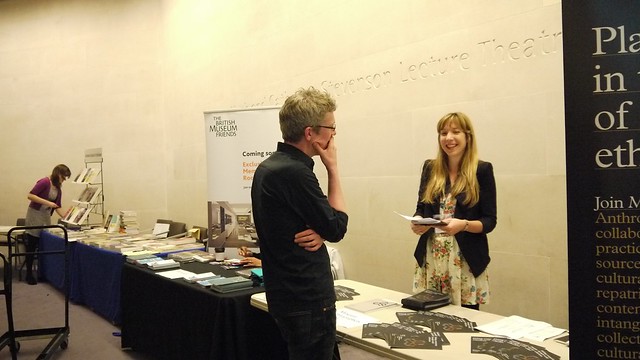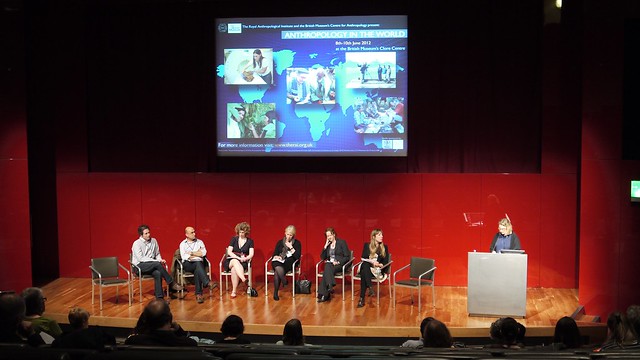Alfred Maudslay, Photography and the Mimetic Technologies of Archaeology: A Study in Method, Process and Effect
Photographic History Research Centre, De Montfort University, Leicester/ British Museum, London
STARTING JANUARY 2013
CLOSING DATE: September 28th 2012
Interview date: week beginning October 15 2012
An AHRC-funded Collaborative Doctoral Award studentship covering stipend and tuition fee costs is offered within the Photographic History Research Centre (PHRC) in the Faculty of Art, Design and Humanities in collaboration with the British Museum.
The project addresses the role of photography and its relationship with other mimetic technologies in field archaeology and the subsequent institutional life of the images in the construction of ‘heritage’. The project also explores the methodological implications for a ‘photographic history’ approach to collections and institutions.
The project will focus on the 1513 magnificent late nineteenth century photographs made of Maya archaeology by Alfred Maudslay, their relationship with other kinds of recording and their subsequent ‘life’ in the Museum. The student will have scope, within the project parameters, to develop an emphasis in photographic history, collections history, history of science, or museum practice in archaeological heritage.
The PhD studentship will be based at PHRC which undertakes leading innovative research on photography and its practices from the early nineteenth century to the present day, and over a wide range of social and cultural processes. It has a dynamic and growing research community and an excellent research library for photographic history. The successful candidate will be expected to contribute to the development of this community and that at the British Museum.
Supervision will be available from Professor Elizabeth Edwards (DMU) and key members of British Museum staff who have active interests in photography, history, archaeology and collections history. The studentship will be based at DMU, Leicester, with extended London-based periods of study at the British Museum and related archives
Candidates might come from a range of possible disciplines: art history, history of photography, museum and heritage studies, science and technology studies, material culture studies, archaeology, visual anthropology, or visual culture studies. A knowledge of Meso-American archaeology is not a requirement.
For a more detailed description of the PHRC please visit our web site or contact Professor Edwards (eedwards@dmu.ac.uk) who will be happy to discuss the studentship further.
Applications are invited from UK or eligible EU/overseas students (please check http://www.ahrc.ac.uk/FundingOpportunities/Documents/GuidetoStudentFunding.pdf Annex A for residency requirements) with a good first degree (First, 2:1 or equivalent) and MA in a relevant subject. Applications are welcome from MAs completing 2012. The CDA scholarship is available for three years full-time study starting January 2013, providing a bursary for both maintenance (currently c. £14,500) and fees.
To receive an application pack, please contact the Faculty Research Office via email at ADHresearch&innovation@dmu.ac.uk. Completed applications should be returned together with a full CV, two supporting references, a statement explaining your interest in the project, and an example of your written work of c.3000 words.
Please quote ref: AHRC/CDA/PHRC12/2
7 September 2012
Photographs, museums and archaeology: AHRC CDA PhD Studentship
9 August 2012
Workshop: Fabricating Fashion? Curating and Creating Pacific Fibre Arts and Adornments
For more information, see:
Museums Association Annual Conference & Exhibition
8-9 November 2012
Edinburgh
As Europe’s largest conference for museum professionals, the event is packed with thought-provoking sessions and essential networking opportunities. It is a great opportuntiy to think creatively, engage with colleagues and develop new skills.
The conference themes are national identity, social justice, and ‘Museums 2020’ - the MA’s new project to create a dynamic vision for museums.
Keynote speakers include:
- Fiona Hyslop, cabinet secretary for culture and external affairs
- Aamer Anwar, human rights lawyer
- Martin Roth, director of the Victoria and Albert Museum.
Details of the conference programme can be found at www.museumsassociation.org/conference
There are greatly reduced rates for those booking before 30 August 2012.
 Run alongside the conference is the annual exhibition, which will host 60 of the top companies working in the sector.
Run alongside the conference is the annual exhibition, which will host 60 of the top companies working in the sector.
The exhibition is free to attend, and in addition there is a free MP workshop programme which will give visitors some great ideas for their museums.
More information can be found at: www.museumsassociation.org/visitexhibition
RAI Photo Competition: The Body Canvas
The Royal Anthropolical Institute are holding their third international photography competition, and are asking people to submit:
Engaging photographs that explore biological, cross-cultural and social elements of body art and modification in relation to these categories:
1) Tattoos and Scarification
2) Piercings and Body Reshaping
1) Tattoos and Scarification
2) Piercings and Body Reshaping
Extended Deadline 31 October 2012
3 August 2012
Conference: Disturbing Pasts: Memories, Controversies and Creativity
We are pleased to announce the details of the conference ‘Disturbing Pasts: Memories, Controversies and Creativity’ at the Museum of Ethnology, Vienna, on the 20th to 22nd November, 2012.
This is part of a two-year international research project led by Dr Leon Wainwright (The Open University, UK) and funded by HERA (Humanities in the European Research Area, the European Science Foundation).
‘Disturbing Pasts’ brings together artists, photographers, curators, policy makers and academics from around the world, with the aim of networking with one another and exploring creative engagements with controversial and traumatic pasts in art practice, curating and museums.
Our theme:
Traumatic pasts have complex and often dramatic influences on the present. In many countries, legacies of war, colonialism, genocide and oppression return again and again to dominate contemporary politics, culture and society. The controversies surrounding traumatic pasts can shape policy, make or break governments, trigger mass demonstrations, and even spark violent confrontation. These pasts also inspire rich visual and creative responses, through which the past is remembered, remade and challenged, and the public space of the modern museum is the primary venue for these responses.
Confirmed speakers include artists, curators, policy-makers and academics:
Peju Layiwola, Dierk Schmidt, T. Shanaathanan, Christopher Cozier, Rita Duffy, Paul Lowe, Rafał Betlejewski, Joanna Rajkowska, Heather Shearer, John Timberlake, Shan McAnena, Sofia Dyak, Wayne Modest, Liv Ramskjær, Maria Six-Hohenbalken, Margit Berner, Clara Himmelheber, Maruska Svasek, Fiona Magowan, Alexander Etkind, Uilleam Blacker, Andrij Portnow, Elizabeth Edwards, Sigrid Lien, Susan Legêne, Anette Hoffmann, Erica Lehrer, Simon Faulkner, Carol Tulloch
‘Disturbing Pasts’ marks a collaboration between three HERA-sponsored research consortia drawn from universities throughout Europe, in partnership with the Museum of Ethnology, Vienna. They are:
o ‘Creativity and Innovation in a World of Movement’ (CIM)
o ‘Photographs, Colonial Legacy and Museums in Contemporary European Culture’ (PhotoCLEC)
o ‘Memory at War’ (MAW)
The project will generate audio-visual material to be made available through the Open Arts Archive (www.openartsarchive.org) and published as a special issue of the Open Arts Journal (www.openartsjournal.org).
Entrance to the conference is free, but places are limited, and so we ask that you please reserve in advance by writing to Julia Binter: Julia.Binter@ethno-museum.ac.at
Committee members for the project include: Dr Leon Wainwright (The Open University, UK), Dr Barbara Plankensteiner (Museum of Ethnology, Vienna), Dr Maruska Svasek (Queen’s University, Belfast), Professor Elizabeth Edwards (De Montfort University, Leicester), Professor Alexander Etkind and Dr Uilleam Blacker (University of Cambridge).
The project '‘Disturbing Pasts: Memories, Controversies and Creativity’ is financially supported by the HERA Joint Research Programme which is co-funded by AHRC, AKA, DASTI, ETF, FNR, FWF, HAZU, IRCHSS, MHEST, NWO, RANNIS, RCN, VR and The European Community FP7 2007-2013, under the Socio-economic Sciences and Humanities programme.
3 July 2012
Lampeter Campus
Deadline: 9 July 2012
As part of the University’s investment into the Humanities and in
response to growing demand for Anthropology and Heritage related
studies, at both UG and PG level, the University wishes to appoint a
fulltime permanent Social/ Cultural Anthropologist with a particular
interest in Heritage or Heritage representations. The post holder will
join a thriving and dynamic School of Archaeology, History and
Anthropology, with a strong tradition in both research, teaching and
project work.
For more information, see: http://www.trinitysaintdavid.ac.uk/en/humanresources/employmentopportunities/
Anthropology of Museums / Anthropology in Museums
MEG at the RAI conference ANTHROPOLOGY IN THE WORLD
The British Museum
8-10 June 2012
by Catherine Moore
by Catherine Moore
 |
| The MEG Stall, with Claire Wintle and Mark Elliott |
Thanks to the questioning minds of Clare Wintle and Chris Wingfield, as well as a grant from Arts Council England (ACE), MEG played a prominent role in the recent RAI conference ‘Anthropology in the World’, held at the British Museum earlier this month.
Eight MEG members were supported by ACE to attend the conference, but funds also allowed MEG to host a roundtable panel discussion session at the conference on ‘Anthropology in Museums/ Anthropology of museum’. The members in attendance meant that there was no shortage of friendly faces at the MEG stall - situated in a prime spot just next to the Waterstones books, Berghahn publishers, but most importantly next to the tea and coffee. This allowed us to showcase our new and improved journal cover, leaflets and pop-up banners - all results of a previous phase of Subject Specialist Network (SSN) funding.
 |
| Coffee in and around the MEG Stall |
MEG Chair Chantal Knowles began the discussion of 'Anthropology in Museums/Anthropology of Museums' with an overview of the historical and contemporary roles played by anthropology and anthropologists at the National Museums of Scotland. What emerged was a shifting landscape where the fortunes of both the ethnographic collections and those who interpret them have been found at the both the centre and the periphery at various times. Sharon Macdonald (University of Manchester) then admitted that she wasn’t an anthropologist in the museum, but one of those doing anthropology about museums, including supervising students who are exploring the role of the cleaners at Kelvingrove Museum, Glasgow. Picking up this strand and extending it through the methodologies of visual anthropology, Elizabeth Edwards (DMU) discussed studies against the grain of the archive, in this case examining a supporting actor in museum displays – the photograph. Claire Warrior described the role of the anthropologist in a museum that is not overtly anthropological, showing through one object what anthropology can bring to the re-interpretation of collections at the National Maritime Museum, Greenwich. Paul Basu (UCL) focused on the ‘affordances’ the museum might offer anthropology as a means of expressing anthropological knowledge in non-textual ways – through juxtaposition, the three dimensional, the affective and art. It then fell to Chris Wingfield to summarise the papers and throw things forward to the debate after lunch. Chris asked whether perhaps Museum Anthropologists might have something of a 'Melanesian' approach to museum artefacts (including exhibitions), being as interested in understanding them through their effects, as by situating them in relation to the context from which they notionally come?
 |
| The MEG hosted panel 'Anthropology in Museums / Anthropology of Museums' |
The panel reconvened after lunch, when some great questions led to a dynamic exchange of ideas. Was the term ethnography still relevant in museums today, specifically as a category by which to define objects? Could art provide a space to say the things that more conventional displays could not? Can museums really fulfill the new demand for ‘impact’ in academic anthropological research? And should we be using exhibitions to experiment and provoke?
Subscribe to:
Posts (Atom)








